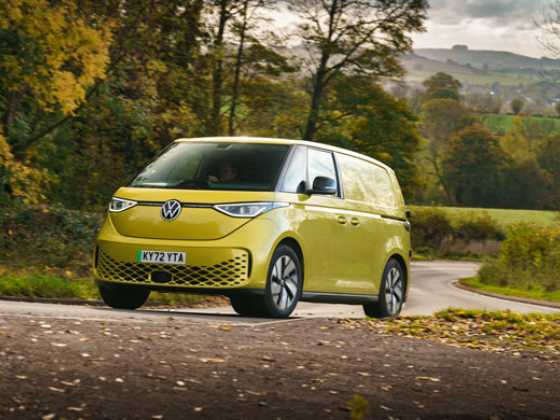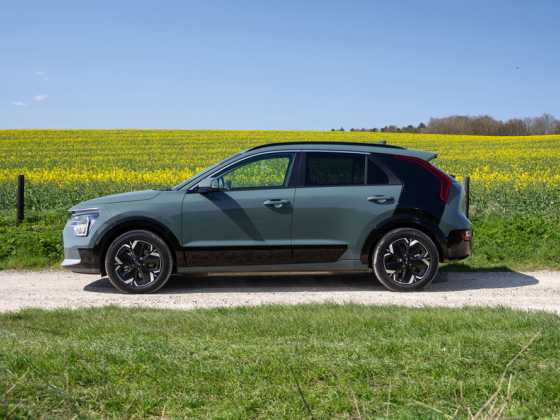The million buck Mini
As the first product of ‘Projekt i’ for BMW, a remarkable electric Mini not only introduces a clearly defined market sector but provides real-time responses to shape the Mini’s future and Iain Robertson drove the $1m car exclusively
 The logic for a US launch of the Mini E was linked to both the State’s ‘clean air’ legislation and the US government incentives given to drivers of eco-friendly motorcars. No less than 500 of a strictly limited run of 560 examples have been despatched to North America and, from a select list of potential and very keen operators, a monthly lease fee of $850 will provide a domestic charging device (fitted by a BMW Mini technician) and a Mini E for a fixed term of 12 months.
The logic for a US launch of the Mini E was linked to both the State’s ‘clean air’ legislation and the US government incentives given to drivers of eco-friendly motorcars. No less than 500 of a strictly limited run of 560 examples have been despatched to North America and, from a select list of potential and very keen operators, a monthly lease fee of $850 will provide a domestic charging device (fitted by a BMW Mini technician) and a Mini E for a fixed term of 12 months.
The Mini brand personnel have been inundated, through the firm’s website, with requests to pay for the privilege of running the new model. A market acceptable lease rate was reached and still the requests poured in. Nobody will be able to buy the cars, as they remain the property of Mini and each will be stripped and comprehensively checked post-trial at ‘Projekt i’, in Munich.
It's electrifying
The Mini E features the use of Lithium-ion battery technology in an industry ‘first’. However, the fact that the cars are as easy to drive and all-but-identical to the conventional petrol or diesel powered models is a major landmark. There is a negligible boot space, which amounts to little more than a standard Mini. However, the car is now a strict two-seater.
Although the car is just like an automatic to drive, the use of a transmission deceleration energy recovery system, which augments the battery power and helps to extend the car’s usable range, means that adopting a more advanced driving style is preferable.
Most of the time, there is scarcely a need to use the car’s brakes, even in stop-start conditions around town. An engine power equivalent of 204bhp ensures that the Mini E delivers the most astonishing pace. Although its top speed is governed to 93mph, floor the accelerator pedal and the urge is spirited enough to despatch the 0-60mph sprint in less than 8.0 seconds, with no cessation of punch all the way to its maximum speed.
Yet, apart from the fancy ‘paint-job’, which amounts to the application of several stylish ‘E’ logos and stripes in garish yellow, on the standard gunmetal grey paintwork, and the virtual lack of extraneous noise, apart from some electric motor whine and accompanying tyre roar, this Mini blended into the Munich roads network like any regular Mini. It was never less than amusing to drive, in a way that all Minis are. In other words, the suspension can become caught out over severe bumps, yet the steering responses are instant and the overall handling is engaging and typical of the brand.
On the environmental front, much investment has been made into Nickel-Metal Hydride (NiMH) battery technology by the likes of Honda and Toyota. A handful of other car manufacturers have also dabbled in the area.
However, NiMH still causes an issue on the recycling front, which is the key reason for the anti-EV chorus to spark up its usual negative lyrics about today’s hybrid motorcars not being as ‘eco-friendly’ as they purport to be. There are no such issues with Lithium-ion batteries. They are known to be inert and non-explosive. They also occupy far less space and possess less of a recharging ‘memory’ – recharging a conventional battery ad nauseam causes it to lose some of its available capacity.
Development
In case you wondered about the source of the ‘million bucks’ reference, consider the costs of a development programme such as this to BMW. Each Lithium-ion battery pack, which had to be specially constructed for the limited production run, cost in excess of £35,000. With the other work essential to produce the electric engines and to re-trim the cars to their new status, plus all of the development driving, research and funding a team of engineers and management for ‘Projekt i’, the costs, although BMW is reluctant to confirm the actual figures, amount to well in excess of £500,000 per vehicle, hence the figure arrived at. The final retail price of a volume-produced alternative would be targeted at around £15,000 per car, at today’s rates, with the battery pack being available on an affordable annual lease basis.
The downsides of Mini E are few but are summed-up generally as a restriction to just two seats, a still remarkable range of almost 150 miles (which is disappointing alongside a petrol version managing 300 miles and a diesel around 450 miles) before a two-hour recharge (using sustainable energy sources) is deemed essential, allied the simple fact that you will NEVER be able to buy this car. The research into the technology will continue under the ‘Projekt i’ handle but will extend into other BMW products and will not necessarily be electricity-based. It is an amazing privilege to stand alongside a giant like BMW and experience its might in such an empathetic manner. I have now driven one tenable view of the future and it is hugely satisfying.
First drive facts
MODEL TESTED Mini E
BODY STYLES 3-door hatchback and 4 door estate
ENGINES Electric/Battery
TRIM GRADES E
PRICES $850/month lease rate
IN THE SHOWROOM On trial in USA and Germany
STAR RATING 5 stars









